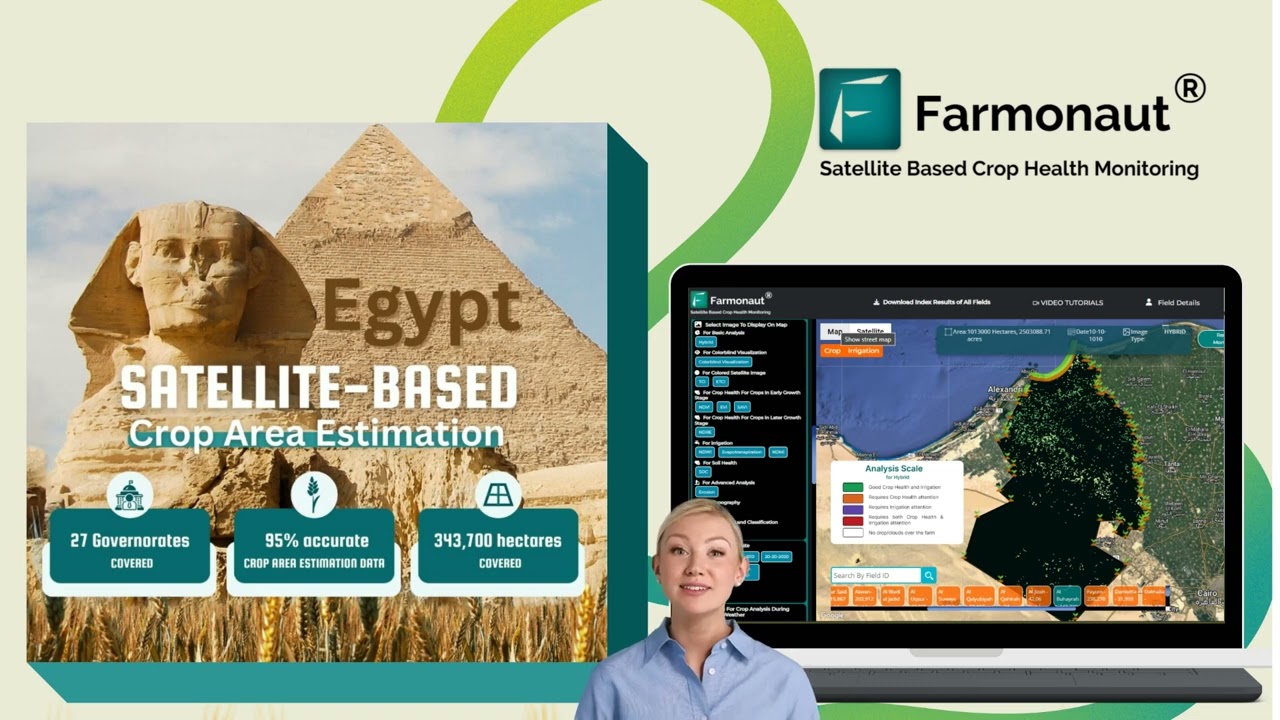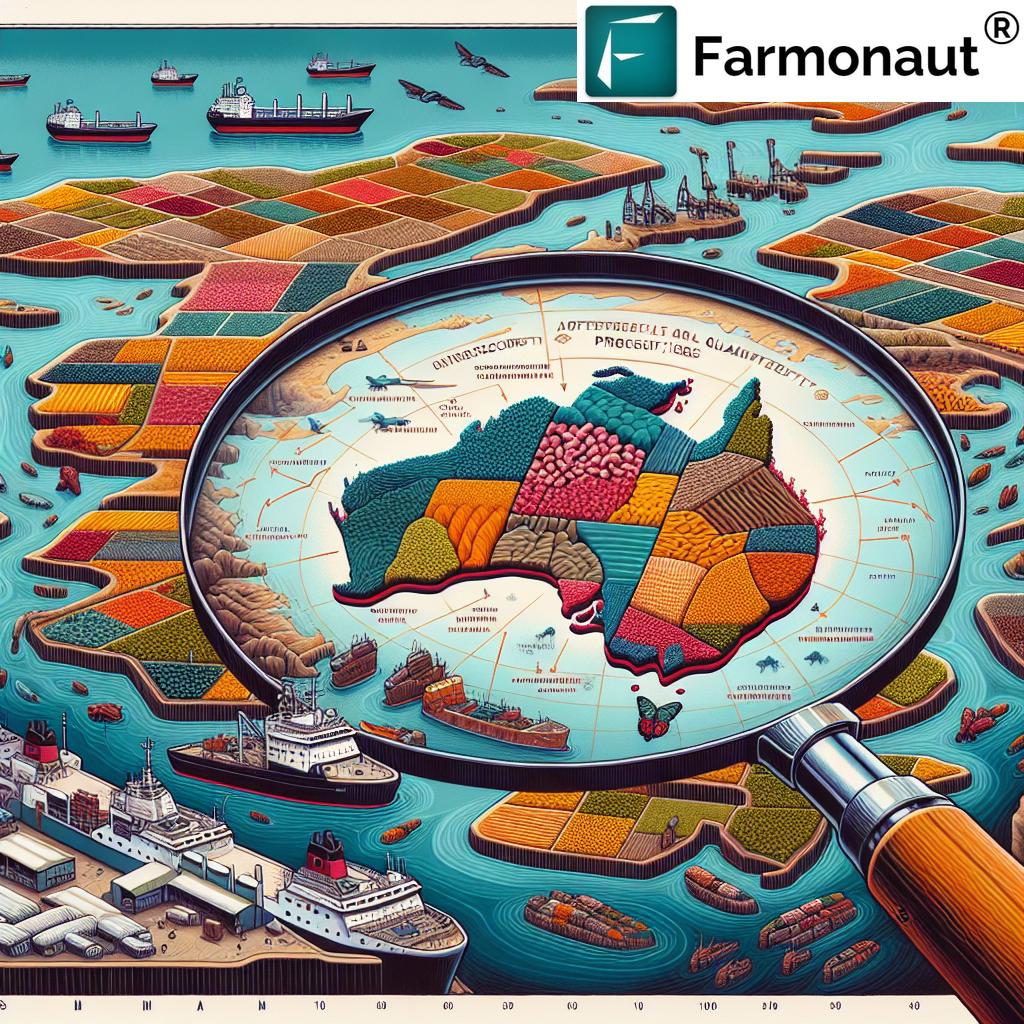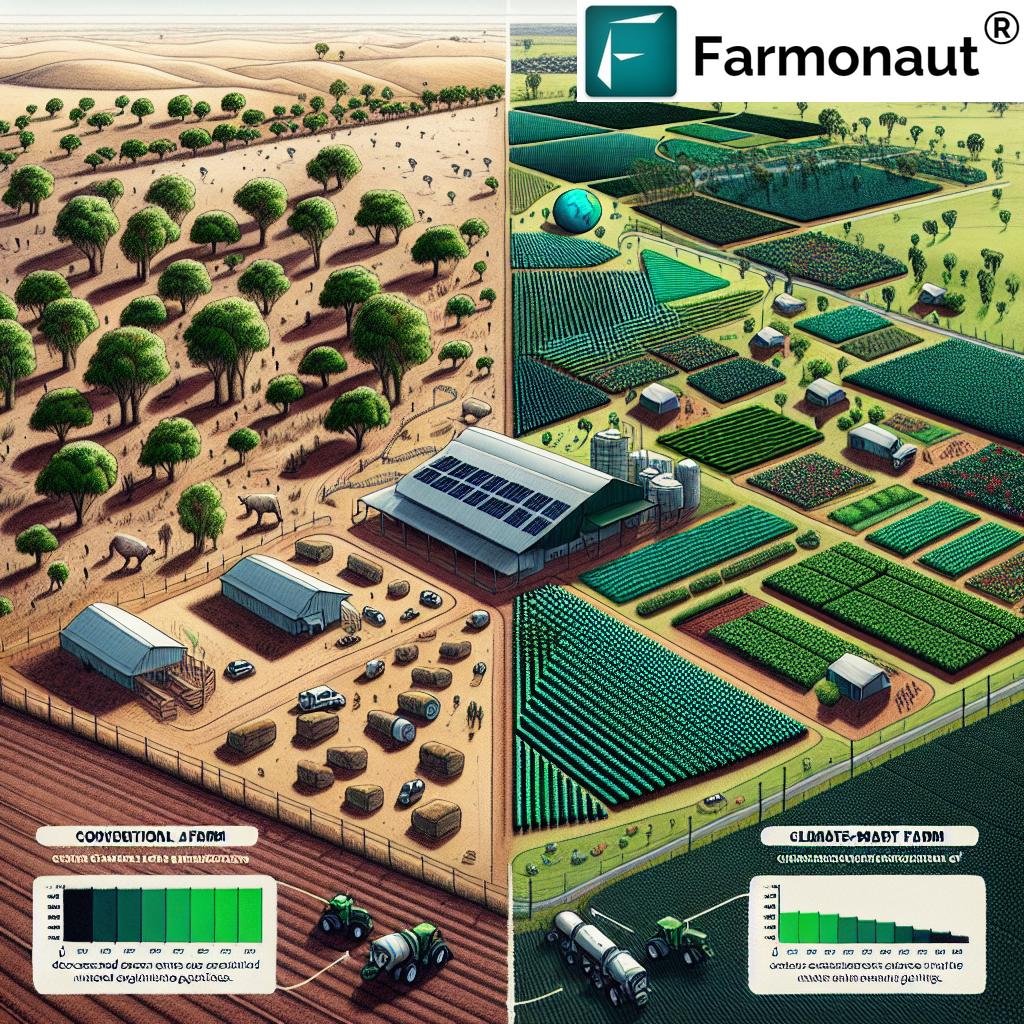Australian Family Farms Face Challenges: Superannuation Tax Impact on Agricultural Sustainability
“Australian family farms contribute over 80% of the country’s agricultural production, facing potential disruption from superannuation tax changes.”
In recent years, Australia’s agricultural sector has been grappling with a new challenge that threatens the very foundation of family farming. The proposed changes to superannuation tax legislation have sent ripples of concern throughout rural communities, raising questions about the future of agricultural sustainability and the broader rural economy. As we delve into this critical issue, we at Farmonaut recognize the importance of understanding how these policy shifts could reshape the landscape of Australian agriculture.
Understanding the Superannuation Tax Impact on Agriculture
The superannuation tax impact on agriculture is a complex issue that requires careful analysis. At its core, the proposed changes aim to increase tax revenue by altering how superannuation funds are taxed, particularly for high-balance accounts. While this may seem like a measure primarily affecting urban professionals, the reality is that many farmers have significant superannuation balances due to the capital-intensive nature of their business and the common practice of using super funds as a retirement strategy.
For Australian family farms, superannuation has long been a crucial tool for:
- Ensuring financial security in retirement
- Facilitating intergenerational farm transfers
- Providing a safety net during lean years
- Funding farm improvements and expansion
The proposed changes could significantly impact these strategies, potentially undermining the family farm financial sustainability that has been the backbone of Australian agriculture for generations.
Australian Agricultural Policy Changes: A Closer Look
The Australian agricultural policy changes regarding superannuation are part of a broader fiscal strategy. However, their implications for the farming sector are profound and far-reaching. Let’s examine some key aspects:
- Increased Tax Burden: Farmers may face higher taxes on their superannuation earnings, reducing the funds available for reinvestment in their operations.
- Complexity in Financial Planning: The new rules could complicate succession planning and intergenerational transfers, which are crucial for the continuity of family farms.
- Reduced Investment Capacity: With potentially less capital available through superannuation, farmers might struggle to invest in new technologies or expand their operations.
- Impact on Risk Management: Superannuation has often served as a buffer against the volatility inherent in farming. The new policies could erode this financial safety net.
These changes come at a time when the agricultural sector is already facing numerous challenges, including climate variability, market fluctuations, and increasing operational costs.

Farm Investment and Innovation: At Risk?
One of the most significant concerns arising from these policy changes is the potential impact on farm investment and innovation. Australian agriculture has long been at the forefront of adopting new technologies and practices to improve efficiency and sustainability. However, the proposed superannuation tax changes could hamper this progress in several ways:
- Reduced capital availability for purchasing new machinery or implementing advanced farming systems
- Hesitation in adopting costly but beneficial technologies due to financial constraints
- Potential slowdown in research and development investments within the agricultural sector
- Difficulty in attracting young farmers to take over family operations, potentially leading to a loss of innovative thinking
At Farmonaut, we understand the critical role that innovation plays in modern agriculture. Our satellite-based farm management solutions, accessible via our  , are designed to help farmers optimize their operations even in challenging times. By leveraging technology, farmers can mitigate some of the financial pressures they may face due to policy changes.
, are designed to help farmers optimize their operations even in challenging times. By leveraging technology, farmers can mitigate some of the financial pressures they may face due to policy changes.
Rural Economy Challenges: A Ripple Effect
The impact of these superannuation tax changes extends beyond individual farms, potentially creating significant rural economy challenges. Rural communities are intrinsically linked to the success of local agriculture. When farms struggle, the entire community feels the effects. Consider the following potential consequences:
- Reduced spending power of farmers impacting local businesses
- Fewer job opportunities in agriculture and related industries
- Decreased investment in rural infrastructure
- Potential migration of younger generations to urban areas, seeking more stable financial prospects
These challenges could lead to a downward spiral, making it increasingly difficult for rural areas to attract and retain residents, further exacerbating economic issues.
Agricultural Technology Adoption: A Path Forward?
In the face of these challenges, agricultural technology adoption becomes more crucial than ever. Advanced technologies can help farmers optimize their resources, increase yields, and reduce costs – all of which are essential in navigating the potential financial constraints imposed by the new superannuation tax policies.
Farmonaut’s suite of tools, including our  and
and  , offer farmers access to cutting-edge satellite imagery and AI-driven insights. These technologies can help in:
, offer farmers access to cutting-edge satellite imagery and AI-driven insights. These technologies can help in:
- Optimizing resource use, including water and fertilizers
- Early detection of crop health issues, reducing potential losses
- Improving decision-making through data-driven insights
- Enhancing overall farm productivity and efficiency
By embracing these technologies, farmers can potentially offset some of the financial pressures created by the new tax policies, maintaining their competitiveness in an increasingly challenging environment.
Farmland Preservation Strategies: Adapting to New Realities
The proposed superannuation tax changes also raise concerns about farmland preservation strategies. With potentially reduced financial capacity, some farmers might be forced to consider selling parts of their land or entire properties. This could lead to:
- Fragmentation of agricultural land
- Increased urbanization of rural areas
- Loss of prime agricultural land to non-farming uses
- Challenges in maintaining economies of scale in farming operations
To counter these risks, it’s crucial for farmers and policymakers to work together in developing strategies that prioritize the preservation of agricultural land. This might include:
- Exploring alternative funding models for farm operations
- Implementing stricter zoning laws to protect agricultural areas
- Creating incentives for maintaining land in agricultural production
- Developing community-supported agriculture initiatives
“Proposed legislation could impact up to 90% of Australian farming businesses, affecting rural economies and farmland preservation strategies.”

Sustainable Farming Practices: More Important Than Ever
In light of the potential financial constraints imposed by the superannuation tax changes, the adoption of sustainable farming practices becomes even more critical. Sustainable practices not only benefit the environment but can also lead to long-term cost savings and improved farm resilience. Key areas of focus include:
- Soil health management to reduce input costs and improve yields
- Water conservation techniques to mitigate the impacts of drought
- Integrated pest management to reduce reliance on expensive pesticides
- Diversification of crops and income streams to spread risk
Farmonaut’s technology can play a crucial role in implementing these sustainable practices. Our satellite-based monitoring systems, accessible through our API, provide farmers with detailed insights into their land and crops, enabling more precise and sustainable management decisions.
Agricultural Risk Management: New Strategies Needed
The changing landscape of superannuation taxation necessitates a reevaluation of agricultural risk management strategies. Farmers will need to explore new ways to protect their operations from financial volatility. Some potential approaches include:
- Diversified Investment Portfolios: Exploring investment options beyond superannuation to spread risk.
- Enhanced Insurance Coverage: Considering more comprehensive insurance policies to protect against various agricultural risks.
- Forward Contracts and Hedging: Utilizing financial instruments to lock in prices and reduce market volatility risks.
- Collaborative Farming Models: Exploring partnerships or cooperative arrangements to share risks and resources.
Technology can play a significant role in risk management. Farmonaut’s advanced analytics and forecasting tools, detailed in our API Developer Docs, can help farmers make more informed decisions, reducing the overall risk profile of their operations.
Farm Succession Planning: Navigating New Complexities
Farm succession planning has always been a complex process, but the proposed superannuation tax changes add new layers of intricacy. Families must now consider:
- The potential impact of higher taxes on retirement savings
- Alternative strategies for transferring farm assets to the next generation
- The need for more liquid assets outside of superannuation
- Potential changes to estate planning and wealth transfer strategies
It’s crucial for farming families to seek professional advice to navigate these new challenges and ensure the smooth transition of their agricultural legacy.
The Long-Term Outlook: Balancing Policy and Agricultural Needs
As we consider the long-term implications of these superannuation tax changes, it’s clear that a delicate balance must be struck between government fiscal needs and the sustainability of the agricultural sector. Key considerations for the future include:
- Potential adjustments to the policy to accommodate the unique needs of farmers
- Development of alternative retirement savings vehicles for agricultural producers
- Increased government support for agricultural innovation and sustainability initiatives
- Greater recognition of the role of family farms in national food security and rural economic stability
At Farmonaut, we remain committed to supporting farmers through these challenging times by providing cutting-edge technological solutions that enhance efficiency and profitability.
Comparative Analysis: Before and After Tax Changes
To better understand the potential impact of the superannuation tax changes on Australian family farms, let’s examine a comparative analysis:
| Aspect | Before Tax Changes | After Tax Changes |
|---|---|---|
| Farm Investment Capacity | High | Medium |
| Innovation Adoption Rate | High | Medium to Low |
| Farmland Preservation | Stable | At Risk |
| Risk Management Strategies | Diverse | Limited |
| Succession Planning Ease | Moderate | Complex |
| Financial Sustainability Score | 8/10 | 6/10 |
This table illustrates the potential shifts in various aspects of farming operations due to the proposed tax changes. It’s clear that without proper mitigation strategies, the impact could be significant across multiple areas of agricultural business.
Technology as a Mitigating Factor
While the challenges posed by the superannuation tax changes are significant, technology offers a ray of hope for Australian farmers. Advanced agricultural technologies, like those offered by Farmonaut, can help offset some of the financial pressures by improving efficiency and productivity. Key technological solutions include:
- Satellite-Based Crop Monitoring: Enables early detection of crop issues, optimizing resource use.
- AI-Driven Decision Support: Provides data-backed insights for better farm management decisions.
- Precision Agriculture Tools: Allows for targeted application of inputs, reducing waste and costs.
- Weather Forecasting and Climate Analysis: Helps in better planning and risk management.
By leveraging these technologies, farmers can potentially mitigate some of the financial impacts of the new tax policies, maintaining their competitiveness and sustainability.
The Role of Community and Collaboration
In facing these challenges, the importance of community and collaboration within the agricultural sector cannot be overstated. Farmers may need to explore new models of cooperation, such as:
- Shared equipment schemes to reduce individual capital expenditure
- Cooperative marketing initiatives to improve bargaining power
- Knowledge-sharing platforms to disseminate best practices
- Community-supported agriculture programs to strengthen local food systems
These collaborative approaches can help farming communities build resilience in the face of policy changes and economic pressures.
Looking Ahead: Adapting to Change
As the Australian agricultural sector grapples with the potential impacts of superannuation tax changes, it’s clear that adaptation will be key to survival and success. This may involve:
- Embracing new technologies and farming methods
- Diversifying income streams both on and off the farm
- Engaging in ongoing education and skills development
- Actively participating in policy discussions and advocacy
At Farmonaut, we are committed to supporting farmers through this transition by continually innovating our technology solutions to meet the evolving needs of the agricultural sector.
Conclusion: A Call for Balanced Policy and Innovation
The proposed superannuation tax changes present significant challenges for Australian family farms and the broader agricultural sector. While the full impact of these changes remains to be seen, it’s clear that farmers will need to adapt and innovate to maintain their financial sustainability and continue their crucial role in Australia’s economy and food security.
As we navigate these changes, it’s crucial for policymakers to consider the unique needs of the agricultural sector and for farmers to embrace technologies and strategies that can help them thrive in this new landscape. At Farmonaut, we remain dedicated to providing cutting-edge solutions that empower farmers to meet these challenges head-on, ensuring a sustainable and productive future for Australian agriculture.
FAQ Section
Q: How will the superannuation tax changes affect family farms specifically?
A: Family farms may face reduced investment capacity, challenges in succession planning, and potential difficulties in managing financial risks due to changes in how superannuation funds are taxed.
Q: Can technology help mitigate the impact of these tax changes?
A: Yes, technologies like Farmonaut’s satellite-based farm management solutions can help improve efficiency and productivity, potentially offsetting some of the financial pressures created by the tax changes.
Q: What are some strategies farmers can use to adapt to these changes?
A: Farmers can explore diversifying their income streams, adopting sustainable farming practices, leveraging advanced technologies, and considering collaborative farming models to adapt to the new financial landscape.
Q: How might these changes affect rural communities?
A: Rural communities may experience economic challenges as farms face financial pressures, potentially leading to reduced local spending, fewer job opportunities, and challenges in attracting and retaining residents.
Q: What role can government play in supporting farmers through these changes?
A: Governments can consider developing targeted support programs, investing in rural infrastructure, and potentially adjusting policies to accommodate the unique needs of the agricultural sector.

















